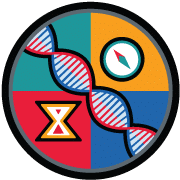How can a forename help you to break down family history brick walls?
 As family historians, we focus on surnames to reveal our direct line and then we focus on other surnames to branch out from the main trunk of our tree and so on, the branches become more numerous, all dependent upon another surname.
As family historians, we focus on surnames to reveal our direct line and then we focus on other surnames to branch out from the main trunk of our tree and so on, the branches become more numerous, all dependent upon another surname.
The forename however can be an interesting tool to help family historians make connections between people in all sorts of ways.
Most of us will be aware of naming patterns in families, an example of this is when the first son is named after the father, first daughter after mother etc. This pattern is typical in families from the earliest records. It is not an absolute but nevertheless gives a useful general guide to how things work.
Using a forename and a birth date together.
We can use both the forename and birth date to see if there is a ‘missing’ child, i.e the oldest son is Charles born two years after the marriage date, the father is John. That would prompt us to look for a child John who was born before Charles, in this way you can sometimes suggest the possible parents for people who have your surname and are ‘floaters’, e.g they may live in the same village but you are uncertain who the parents are. OK, so there are no absolutes using forenames but it’s a possible starting point.
At some point, all of us hit the brickwall, where we are unable to reliably say who the previous generation were, one useful set of clues to help unwrap the problem are forename patterns.
Let us give you an example of what we mean. John Banting was born c.1750, we have a direct line running to the present day but no idea who his parents were. His children had a forename cluster of George, Henry, James and Charles repeated over six generations. His oldest son is called George.
There are a number of possible avenues, all forename related for us to follow.
-
- Since the first born is called George, look in the parish and surrounding parishes for a George Banting, as John may well have named his first born son after his father.
- Don’t forget to look across county boundaries if the parish is on the cusp of a county i.e within a couple of days walk.
- Look at all instances of the surname and related baptisms to search for the same cluster of names, do not ignore those that are further afield, even though they may be many instances of the surname in the parish, John may have migrated from elsewhere being part of a more distant family.
- It may be that the forename patterns, combined with say occupation patterns reinforce the possibility of likely family connections.
- In the case of John, the forename patterns found in the parishes around him contained a lot of Thomas’s and Samuel’s and there were none in John’s family or those of his descendants, neither were there any George, Henry or Charles in their cluster, so maybe it was time to cast the net further afield
- Spreading the net further, into neighbouring counties, revealed the same forename cluster with the same surname and the same occupation as John and his family, that of tailor, allied to it.

